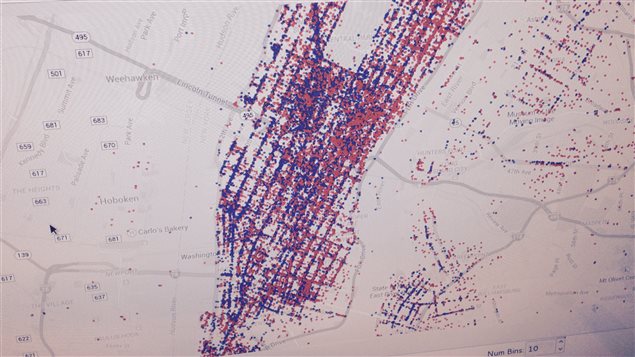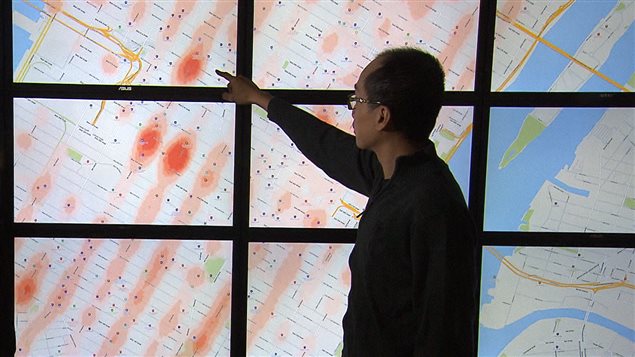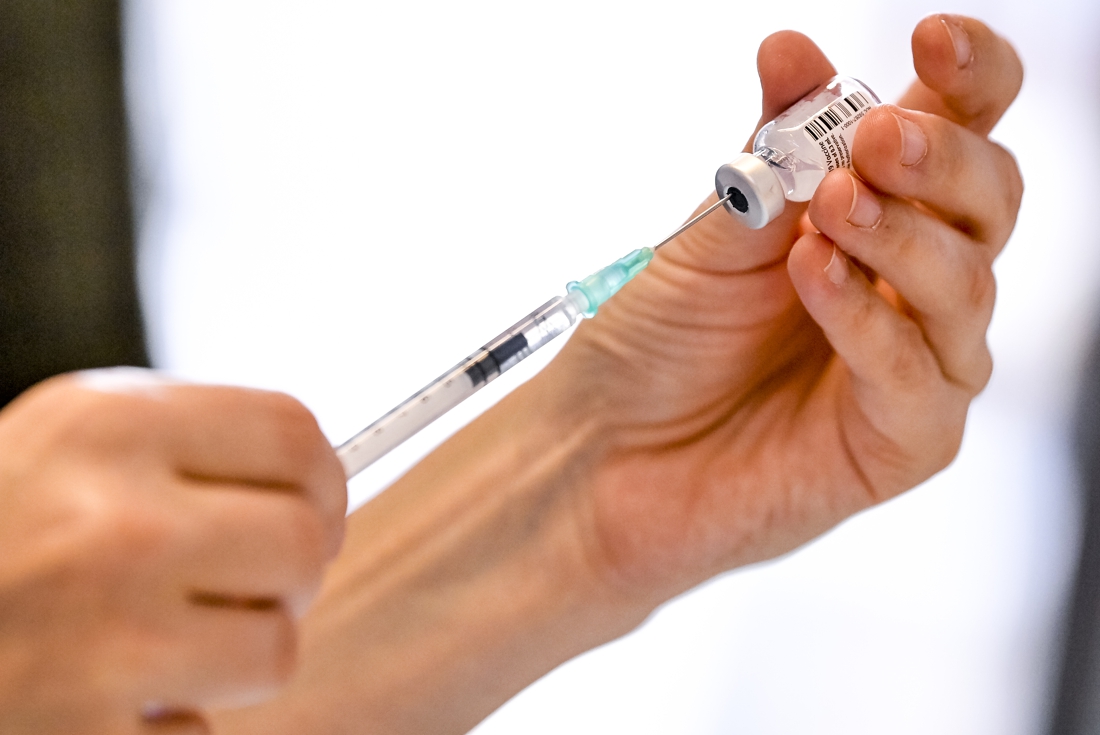 –
–
Somewhere on a Brooklyn rooftop, two cameras, one classic and one infrared, take a photo of Midtown Manhattan every 10 seconds. They are the basic tools of the Urban Observatory, one of the first projects of the new Center for Urban Science and Progress, affiliated with New York University. Created on the initiative of the former mayor Michael Bloomberg in 2012, this center, in partnership with the City, works on all kinds of data concerning New York.
We acquire, integrate and analyze data with the aim of improving the city through more effective decisions, better planning and better policies.
Gregory Dobler analyzes data from the Urban Observatory. A former astrophysicist, he prefers his new job because it is more concrete. By showing us the screens where we can see in real time what the cameras are capturing outside, he gives examples of data collected, on the use of light for example: did you know that the majority of New Yorkers go to bed between 11 p.m. and midnight? The processing of standard images also makes it possible to see a toxic cloud which would be invisible to the naked eye. As for infrared images, they allow, for example, to measure the heat of the places photographed. The more red there is, the hotter it is.
 –
–
Infrared image showing an area of Midtown Manhattan. The portions in red are those where the most heat emerges. © Jean-Sébastien Cloutier
Look at this building: you can see that its windows give off more heat than its facade. While on this other building, the windows are cooler than the facade. This allows us, for example, to detect heat loss and improve energy efficiency.
The center must also fulfill certain missions ordered by the City. The last one concerns parks, explains director Steven Koonin: “The City wants to know how many people use parks and what they do when they go there. By using cameras already present in the parks, we will be able to answer these questions, while preserving people’s privacy. “
The issue of respect for private life often comes up. There is no question of being compared to Big Brother, on the contrary, defends himself Gregory Dobler: “At the Observatory, our cameras have a limited resolution so we cannot see in the apartments because, first of all, we do not want to second, we protect privacy; and third, we study sets of individuals. “
 Map of New York showing the frequency of taxi rides © Jean-Sébastien Cloutier
Map of New York showing the frequency of taxi rides © Jean-Sébastien Cloutier
The Hudson Yards project
Another partnership developed by the center concerns a $ 20 billion private real estate project, the largest of its kind in American history. On the banks of the Hudson River, at 33rd Street in Manhattan, a first tower grows. We are on the Hudson Yards site. In a few years, there will be offices, shops, public spaces and 5,000 apartments here. The approximately 10,000 New Yorkers who will live there will form the first “quantified community” on the planet. They will be studied and they will be given technological tools.
Project vice president Michael Samuelian explains that different sensors at the site could, for example, track where people are, what the ambient air quality is, what the temperature is and how much circulation there is. a nearby. It could go further:
“We are very aware of how technologies can make life easier. Calling an Uber car for carpooling or asking online to have your groceries delivered, electronically monitoring the apartment to make sure, for example, that your child is okay, that you haven’t left your lights on and that your oven is okay closed. “
 Map showing summary of taxi rides in New York
Map showing summary of taxi rides in New York
Montreal can draw inspiration from the Big Apple
In Montreal, the person in charge of the smart city file, Harout Chitilian, is well aware of the existence of the New York data analysis center. He believes that Montreal will have to equip itself with such a center sooner or later.
I see it as an obligation. We are going to dissect this data center, and we will see what ingredients we need to develop this expertise.
He alludes to a possible partnership with the École Polytechnique, which would consider setting up advanced programs in data science. According to Harout Chitilian, data will become a “natural resource”, like energy.
If it wants to take advantage of it, Montreal must therefore continue to move forward to become a genuine smart city serving its citizens.
—
;Composite=(type=URL,url=https://images.radio-canada.ca/v1/assets/elements/16x9/outdated-content-2015.png),gravity=SouthEast,placement=Over,location=(0,0),scale=1)
